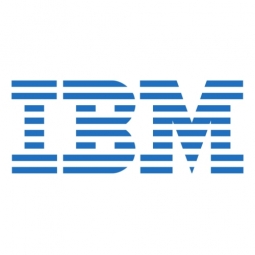Download PDF
Mastercard Exceeds CTR Benchmark by 54% with IBM Watson Advertising Accelerator

Applicable Industries
- Chemicals
- Consumer Goods
Applicable Functions
- Product Research & Development
- Sales & Marketing
Use Cases
- Time Sensitive Networking
The Challenge
In the face of global challenges, brands were required to adapt their communication and outreach strategies. Mastercard, a global technology company in the payments industry, was no exception. The company needed to educate consumers about their partnership with ‘Stand Up to Cancer’ and their campaign to donate up to four million dollars to help fund cancer research. The challenge was to effectively reach and engage consumers, and to do so in a way that would resonate with them and encourage them to take action.
The Customer
Mastercard
About The Customer
Mastercard is a global technology company in the payments industry. Their mission is to connect and power an inclusive, digital economy that benefits everyone, everywhere by making transactions safe, simple, smart and accessible. They are committed to innovation and are constantly seeking ways to leverage technology to improve their services and reach. In this case, they were looking for a way to effectively communicate their partnership with ‘Stand Up to Cancer’ and their campaign to donate up to four million dollars to help fund cancer research.
The Solution
Mastercard turned to IBM Watson Advertising and its Accelerator tool. The Accelerator uses AI to rapidly and continuously learn which creative elements will resonate with each audience based on not only how consumers react but also on a multitude of other key signals such as DMA, device type, and time of day. Mastercard leveraged Accelerator to predict and serve ad units with creative elements most likely to be relevant and engaging for consumers. This approach was aimed at increasing engagement and action, ultimately educating consumers, uncovering creative insights, and showcasing the power of AI to bring about positive change. Mastercard also learned valuable creative insights like action-based headlines and unique CTAs resonated with users more than generic ones.
Operational Impact
Quantitative Benefit
Related Case Studies.
.png)
Case Study
Improving Vending Machine Profitability with the Internet of Things (IoT)
The vending industry is undergoing a sea change, taking advantage of new technologies to go beyond just delivering snacks to creating a new retail location. Intelligent vending machines can be found in many public locations as well as company facilities, selling different types of goods and services, including even computer accessories, gold bars, tickets, and office supplies. With increasing sophistication, they may also provide time- and location-based data pertaining to sales, inventory, and customer preferences. But at the end of the day, vending machine operators know greater profitability is driven by higher sales and lower operating costs.

Case Study
Honeywell - Tata Chemicals Improves Data Accessibility with OneWireless
Tata was facing data accessibility challenges in the cement plant control room tapping signals from remote process control areas and other distant locations, including the gas scrubber. Tata needed a wireless solution to extend its control network securely to remote locations that would also provide seamless communication with existing control applications.

Case Study
Advanced Elastomer Systems Upgrades Production
In order to maintain its share of the international market for thermoplastic elastomers AES recently expanded its Florida plant by adding a new production line. While the existing lines were operating satisfactorily using a PROVOX distributed control system with traditional analog I/O, AES wanted advanced technology on the new line for greater economy, efficiency, and reliability. AES officials were anxious to get this line into production to meet incoming orders, but two hurricanes slowed construction.

Case Study
Series Production with Lot-size-1 Flexibility
Nobilia manufactures customized fitted kitchens with a lot size of 1. They require maximum transparency of tracking design data and individual processing steps so that they can locate a particular piece of kitchen furniture in the sequence of processes.







